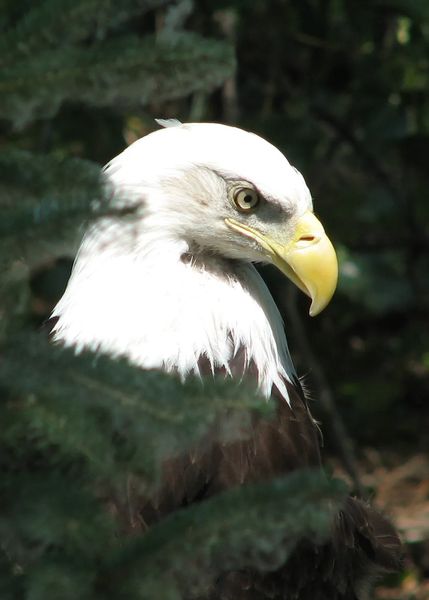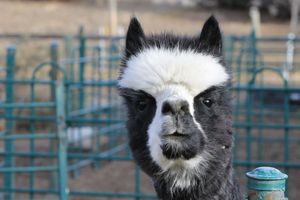.jpg?fit=outside&w=1600)
Bald Eagle
Haliaeetus leucocephalus
Bald eagles are the national symbol of the United States and one of the largest birds of prey species. They can be found all over North America including the United States, Canada, and even into parts of Mexico. They typically will be found in forested areas or grassland areas but are most commonly found near large bodies of water like rivers, streams, and lakes. This is because they are carnivores and will mostly hunt fish and other small mammals found in the forest. Bald eagles are known for their coloration, but they do not hatch looking like that. When they hatch, they are relatively small for their size and covered in down feathers to keep warm. As they grow, they will get larger and be almost all brown, with patches of white; at this age, they can look very similar to golden eagles. As they reach adulthood, they will get their “bald” or white head coloration and whitetails. Currently, bald eagles are no longer listed as endangered, but at one point their populations did drop due to multiple different effects like hunting, habitat loss, and pesticide usage. Today bald eagles are currently protected by multiple different acts including The Bald and Golden Eagle Protection Act, The Migratory Bird Treaty, and The Lacey Act.
Click HERE for a Bald Eagle Activity Sheet!
Our Current Residents
Emelio, Male - Hatched 1990-92 (estimated and celebrated)
Emelio is one of the oldest animals at the Zoo and came to ZooMontana in 1998 from the Bird Treatment and Learning Center in Anchorage, Alaska after being treated for a gunshot injury from poachers. Due to this injury, Emelio’s flight was negatively impacted, and he was deemed non-releasable.
Although both eagles look very similar when next to each other, you can tell them apart due to the amputation on their wings. Emelio’s wing was amputated at the “elbow” on his wing and due to this, his feathers tend to look a little less groomed.
Tokata, Female - Hatched 1996 (estimated and celebrated)
Tokata also came to ZooMontana in 1998 from the Bird Treatment and Learning Center in Anchorage, Alaska (just like Emelio) but was treated for what they thought to be a powerline strike that injured her left wing. Due to this injury, Tokata was also deemed non-releasable.
Another way you can tell the difference between the two birds is that Tokata will appear a bit browner than Emelio and is often more vocal, you may hear her chirp-like call from their habitat.
Taxonomy
- Kingdom: Animalia
- Phylum: Chordata
- Class: Aves
- Order: Accipitriformes
- Family: Accipitridae
- Genus: Haliaeetus
- Species: Haliaeetus leucocephalus
Animal Facts
Carnivore: mainly eat fish and smaller mammals
Population Status (according to IUCN): currently listed as Least Concern
Montana Population Status (according to Montana Field Guide): currently listed as Apparently Secure
Habitat: forested areas near large bodies of water
Activity: diurnal- mainly active during the day

















































